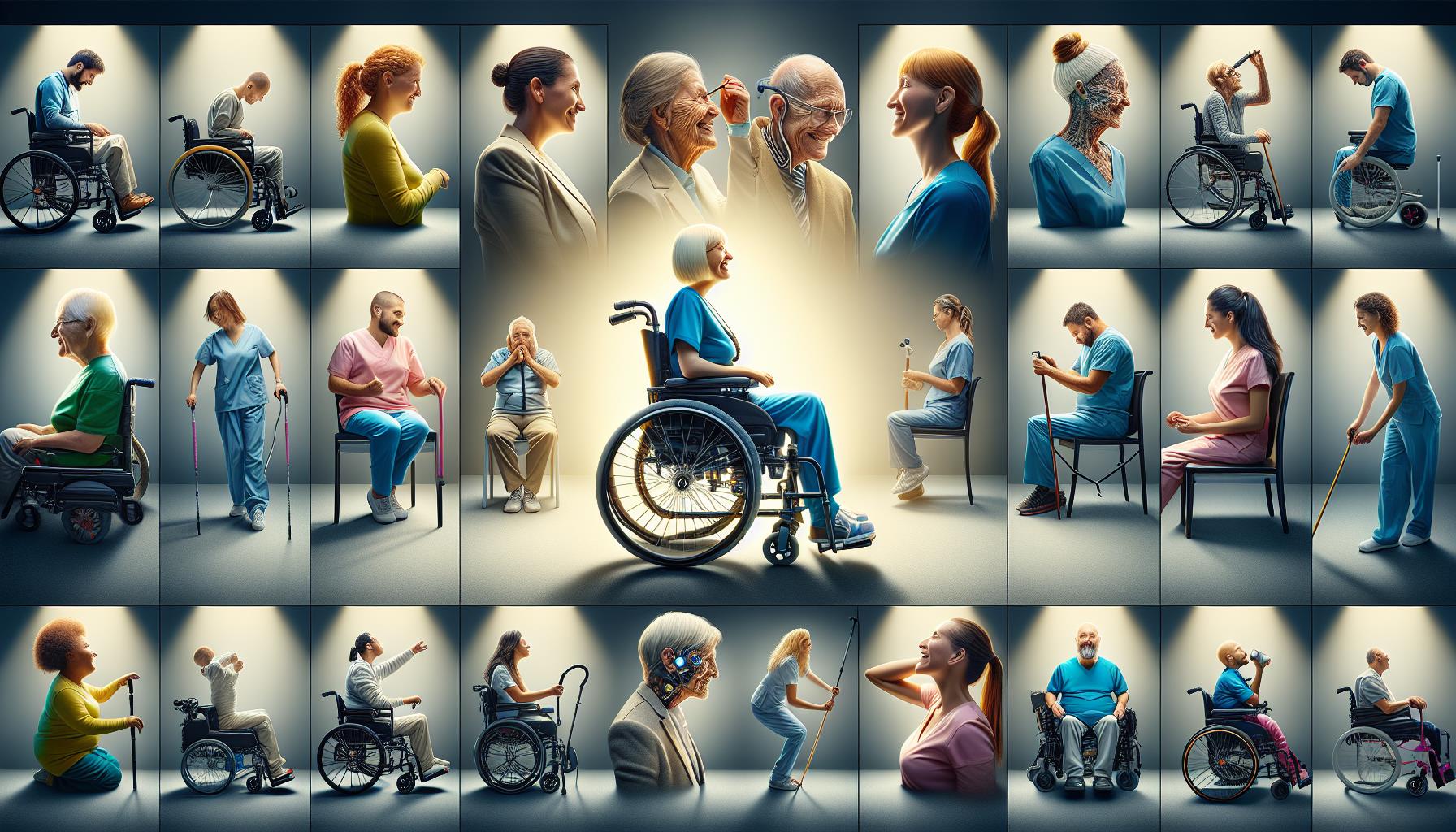In recent years, the advent of artificial intelligence (AI) has revolutionized the way we live, work, and interact with the world around us. Its impact is particularly profound in the lives of people with disabilities, offering unprecedented opportunities for empowerment and independence. By harnessing the power of AI, individuals with various disabilities are finding new ways to navigate challenges, thereby enhancing their quality of life and participation in society.
AI technologies, from voice recognition software to sophisticated predictive typing, are breaking down barriers that have long stood in the way of people with disabilities. These innovations are not just tools for convenience but lifelines that open up the world in ways previously unimaginable. As AI continues to evolve, its potential to transform lives keeps expanding, offering a glimpse into a future where technology and human capability merge to create a more inclusive society.
Revolutionizing Communication and Mobility
One of the most significant areas where AI is making a difference is in communication. For individuals with speech or language impairments, AI-powered devices and apps offer a voice, translating text into speech, and vice versa, in real-time. This technology enables clearer, more effective communication, helping to bridge the gap between those with disabilities and the wider world. Additionally, predictive text and customized keyboards allow for easier and faster typing, making digital communication more accessible.
AI is also transforming mobility for people with physical disabilities. Autonomous vehicles and advanced navigation systems promise a future where transportation is more accessible, reducing reliance on public transport or personal assistance. Moreover, AI-powered prosthetics and mobility aids are becoming more intuitive, adapting to the user’s movements and needs, thus providing a level of independence that was once thought to be out of reach.
Enhancing Daily Living and Social Interactions
AI technology is not just about facilitating basic needs; it’s also about enriching the everyday lives of people with disabilities. Smart home devices, controlled via voice commands or smartphone apps, enable individuals to manage their living environment with ease, from adjusting lighting and temperature to operating appliances. This autonomy in personal spaces is a significant step towards self-sufficiency and comfort.
Furthermore, AI is opening up new avenues for social interaction and entertainment. Virtual assistants can provide company, remind users of appointments, and even help with social cues and interactions for those with cognitive or developmental disabilities. AI-driven educational tools and games are also tailored to the unique learning needs of individuals, making education and leisure more accessible and enjoyable.
Customizing Healthcare and Therapeutic Approaches
AI’s impact extends into the healthcare sector, offering personalized care and treatment plans for individuals with disabilities. AI-powered health monitoring systems can track vital signs, predict potential health issues, and even assist in diagnosing conditions. This proactive approach to healthcare not only improves the quality of care but also empowers individuals to take control of their health and well-being.
In therapy and rehabilitation, AI-driven applications provide customized exercises and routines, adapting to the progress and needs of the user. For those with mental health challenges, AI chatbots offer support and counseling, acting as a first line of defense in times of crisis. These innovations ensure that healthcare is not a one-size-fits-all model but a tailored approach that recognizes the unique needs of each individual.
Breaking Down Barriers in Education and Employment
AI technologies are making education more accessible and inclusive for students with disabilities. From AI tutors that adapt to a student’s learning pace and style to software that transforms textbooks into accessible formats, technology is leveling the playing field in educational settings. This personalized learning experience not only enhances academic performance but also boosts confidence and motivation among students with disabilities.
In the realm of employment, AI is breaking down barriers by providing tools that accommodate the needs of workers with disabilities. Whether it’s software that enhances readability for those with visual impairments or AI-driven job matching platforms that identify suitable roles based on skills and abilities, technology is creating more inclusive workplaces. This not only benefits individuals with disabilities but also enriches organizations with diverse talents and perspectives.
The potential of AI to transform the lives of people with disabilities is immense and still largely untapped. As technology advances, it’s crucial that developers and policymakers work closely with the disabled community to ensure that AI solutions are inclusive, accessible, and tailored to meet their needs. By doing so, we can unlock the full potential of AI, creating a more equitable and inclusive society for all.
As we stand at the threshold of this new era, it’s clear that AI holds the key to unlocking a world of opportunities for people with disabilities. By embracing these technological advancements, we can dismantle the barriers that have long held individuals back, paving the way for a future where everyone has the chance to live their lives to the fullest, unencumbered by disability.
